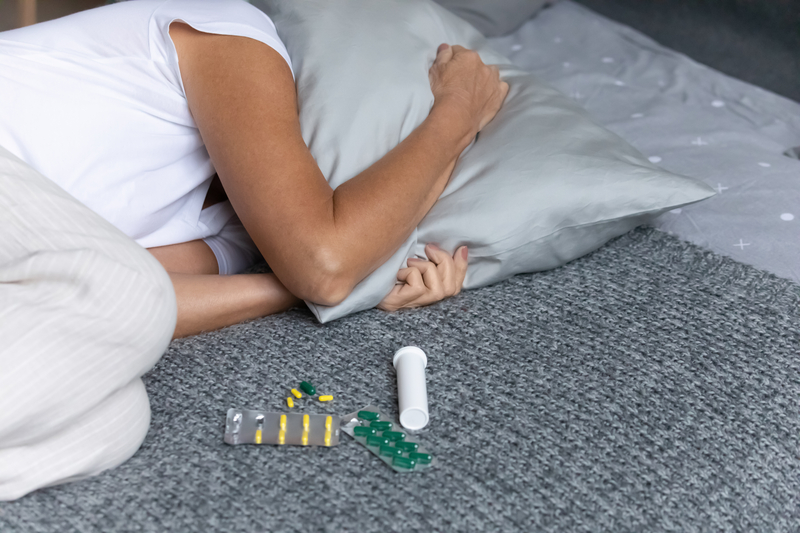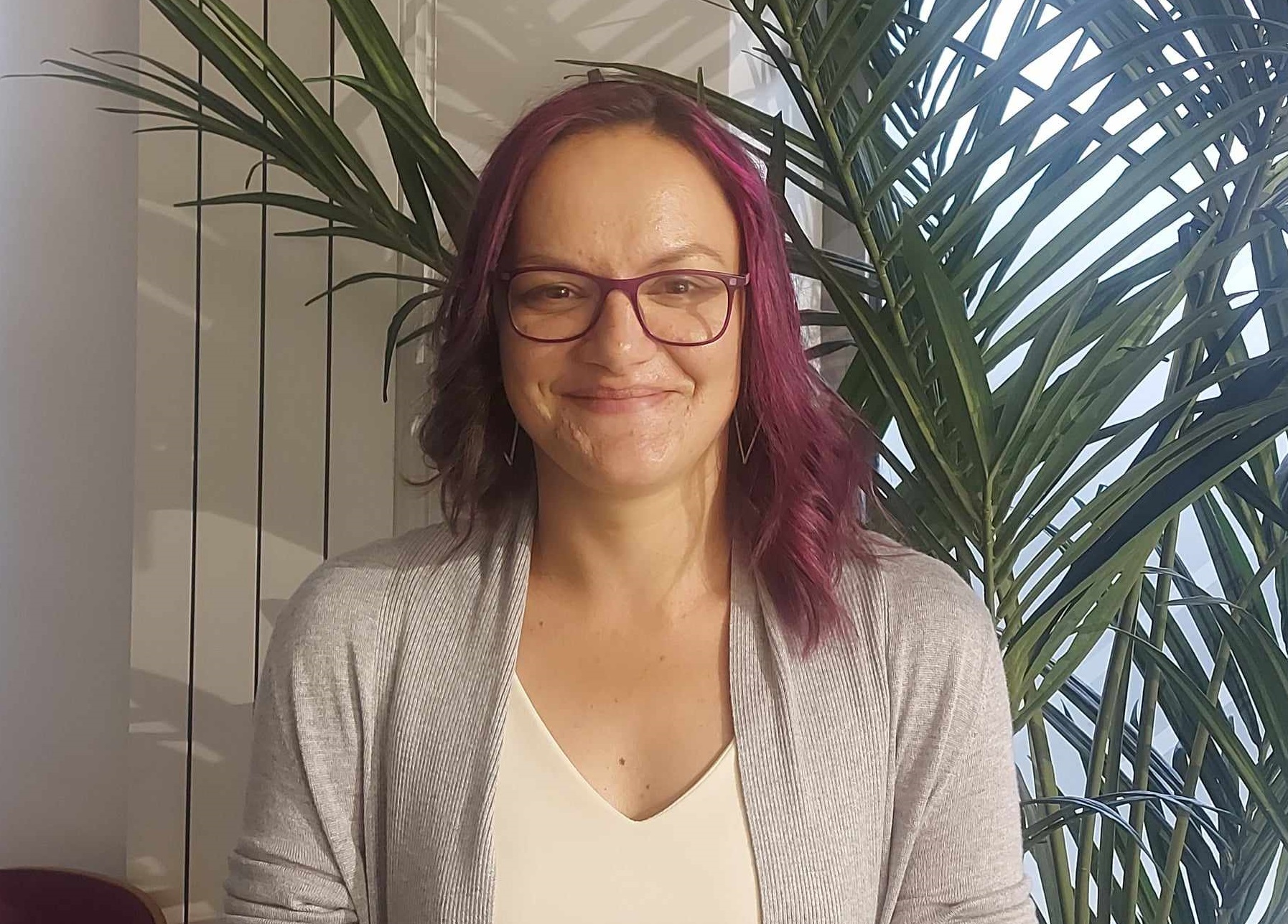
Daliana Bogioaga is 36 years old, she is a clinical psychologist and psychotherapist. She suffers from chronic migraines and has lived more than half her life with this complex neurological disease, which many consider a quirk. For Daliana, the diagnosis was made only 10 years ago and after years of stigmatization and appeals like “Take an aspirin too, it’s just a headache.”
Since her own experience helped her to work better with and understand patients with migraines, today more and more people suffering from migraines cross the threshold of her office, even if she says that currently the number of Romanians in this situation who realize the importance and prioritize going to a psychologist remains low
The truth about migraines: they can kill you 20 days a month
Migraine, which many see as a fad, is actually a complex neurological condition.
2.3 million adults in Romania – women and men (approximately one in seven men), as well as children – suffer from migraines of varying degrees of severity.
Migraines often begin during puberty and mostly affect adults of working age, but can also be present in children and the elderly.
It is often treated as a simple headache that goes away after taking a pill, although a migraine episode can last up to 72 hours.
People who end up with chronic migraines may have throbbing headaches and other symptoms, such as nausea, vomiting, sensitivity to light, sensitivity to sounds and smells, stiff neck and shoulders, and blurred vision—for up to 20 days a week.month .
In addition, symptoms may be aggravated by physical activity – walking, climbing stairs, etc.
Almost half of people with chronic migraines say they are unable to work during prolonged migraine episodes.
People who suffer from migraines say that dealing with it often becomes a way of life – it’s something people have to deal with in their daily lives, and it can stop them from doing the things they love.
Migraine treatment primarily involves avoiding factors that contribute to the occurrence of attacks. Precipitating factors can be irregular diet, fatigue, lack of sleep, co-infections, stress, certain oral contraceptives, hormonal disorders, certain types of exercise, weather changes, etc.
There is no cure for migraine – in the sense that it cannot be cured – but the severity of an attack can be reduced and steps can be taken to prevent headaches from occurring.
Treatment is only acute (symptomatic) and includes non-specific drugs (non-steroidal anti-inflammatory and anti-emetics) or specific anti-migraine drugs prescribed for this condition and dispensed on a medical basis, such as triptans or, more recently, ditans and hepants.

Migraine / Photo: Fizkes | Dreamstime.com
“You always wonder if the person in front of you really understands your problem”
The discomfort caused by the disease is often compounded by stigma and misunderstanding on the part of others.
“If you talk about the people that I’ve seen in my life and that I’ve known, including from the cabinet, most of them feel very misunderstood, they’re pushed away, they feel marginalized, they feel stigmatized. They are ashamed to talk about it, because many of them have also faced the loss of their jobs,” Daliana Bogioaga admits.
Daliana herself referred some of them to doctors, who diagnosed them: “I work with patients who have developed migraines throughout their lives, and many of them did not even know they had migraines and talked to me about the symptoms, but . they were referred to various specialists who diagnosed them with migraines.”
For Daliana Bogioaga, her own experience with migraines has helped her better work with people with migraines who walk through her office: “Because you always wonder if the person in front of you really understands your problem.”
At the moment, however, few Romanians who suffer from migraines consult a psychologist: many do not realize the importance of therapy, and others, of course, cannot afford it.
This is even if patients who have not passed the threshold of a psychologist risk turning in a closed circle: stress is a trigger associated with migraine.
In addition, in Romania, even going to a psychologist is still stigmatized, many associate it with insanity.
“A psychologist costs money, it’s a luxury. We also have mentalities to deal with – many believe you have to be crazy to see a psychologist.”

Daliana Bogioaga, clinical psychologist and psychotherapist / Photo: HotNews.ro
: Invisible disease. “It’s all in your head, you must be crazy, take some aspirin, it’s just a headache”
Daliana Bogioaga is 36 years old and says that “I lived with migraines for more than half of my life, but the diagnosis was made only 10 years later.”
During these 10 years, she admits that she went “through various stigmatizations, through various external messages from specialists and acquaintances, messages like: “It’s only in your head, you must be crazy, take some aspirin, it’s just a headache. “All kinds of messages you really don’t want to hear when you feel like your life isn’t what it should be.”
He says that one of the most important things for migraine sufferers is the support of those around them: “Because it’s very important to know that both negative and positive events can trigger migraines, paradoxically. It is very important to understand that people with migraine need support. They don’t need messages like, “Let go, everything will be fine!” In the 10 years leading up to the clear diagnosis, I received a lot of humiliation and disrespect.”
Like most long-term migraine sufferers, Daliana Bogioaga now has chronic migraines, which in her case means more than 20 days of pain a month.
The experience she went through made her talk about it more and more, and she wants “Romanian society to change in this sense. I think it is appropriate to talk about the visibility of these people, because they are, first of all, people, they are not sick, and migraine is really an almost invisible disease.

Migraine / Photo: Photo: Fizkes | Dreamstime.com
Many people with migraines end up getting divorced or losing their jobs
Reflecting on the life stories of migraine sufferers – hers and others – Dalyana says that “the main obstacles we face are definitely difficulties at work, which can lead to job loss and of course lead to increased financial stress. And guess what, financial stress is a migraine trigger.”
Another major vulnerability concerns the couple’s relationship, “which can be affected by this disease. I know many women who have gone through a divorce and their migraines, which were once or twice a month at first, have become chronic.”
“Not to mention all those cool moments that you want to share with your friends,” says the psychologist.
On the other hand, any group membership “helps us cope with living with migraines. The moment you don’t have that, you risk falling into a zone of extreme loneliness.”
“If I were to look at the effects of it, just think, not having a migraine, what it would be like to have one. It is impossible not to fall into a closed circle of anxiety, disappointment, depression, and suicidal thoughts. I’ve even seen studies — more crimson, I must admit — that show that some men actually ended their lives by suicide because they really didn’t see any other way out. Think how drastic the changes are, how low the quality of life of these people is. And especially when you’re in your prime and there’s a lot of pressure on you — that your life has to be a certain way — at some point you ask yourself, ‘What do I do from now on?'” he says. Daliana Bogioaga.
She also says that “if you get inside the head of someone who is actually having a migraine attack, you will have these thoughts, thoughts with associated emotions. You will see pain, you will see nightmare, you will see pills, you will see loneliness. At some point, you actually feel like you don’t want to live with it anymore. I can honestly say that I have not met a single person with migraines who has not at least once gone through what is being discussed here.
He would like to see in Romania a collaboration between specialists – both medical and psychological, including support groups and family groups – for the benefit of patients.
“I can say that it helped me: I was helped a lot by my family, who finally understood what it was about. My friends helped me, my neurologist helped me a lot and I worked with a psychotherapist whenever it was necessary. That is why I also turn to psychotherapy every time I need it,” she admits.
“And the fact that it exists finally helped me a lot. related research is beginning to unravel many other mechanisms of migraine – which are quite complex anyway – and from all this story about me and the people around me, it is very important to understand that we are strong because we have to, not because we definitely want it,” concludes psychologist Daliana Bogioaga.
Photo: Dreamstime.com, HotNews.ro.
Read also:
-
A migraine is not just a headache. Considered purely a “female” quirk or problem, it is actually the leading cause of disability in people under 50
Source: Hot News
Ashley Bailey is a talented author and journalist known for her writing on trending topics. Currently working at 247 news reel, she brings readers fresh perspectives on current issues. With her well-researched and thought-provoking articles, she captures the zeitgeist and stays ahead of the latest trends. Ashley’s writing is a must-read for anyone interested in staying up-to-date with the latest developments.